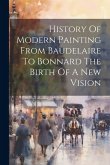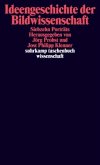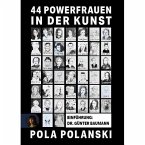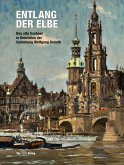Brasil! The Dawn of Modernity In the winter of 1944, over the course of three weeks, the Royal Academy of Arts hosted the »Exhibition of Modern Brazilian Paintings« in its grand, neoclassical Main Galleries. The show's title is somewhat misleading as it was, in effect, two distinct exhibitions rolled into one: the first, the »Exhibition of Modern Brazilian Paintings«, comprised 80 paintings and 86 works on paper displayed in two galleries; and the second, »Brazil Builds«, contained 192 photographs and occupied a single gallery. Between 1947 and 1948, both the Museu de Arte Moderna de São Paulo (MAM-SP) and the Museu de Arte de São Paulo (MASP) opened, as well as the Museu de Arte Moderna do Rio de Janeiro (MAM-RJ), and an art critic referred to these initiatives as an »indication of the Brazilian desire to communicate with its own artists as well as associating with those international centres of artistic expression«. Not long afterwards, in 1951, Brazil inaugurated the Bienal Internacional de São Paulo: the first biannual exhibition anywhere in the world after Venice, and a demonstration of the value Brazil placed on art and culture at that time, emphasizing its determination to be part of the emerging post-war international art circuit. The Semana de Arte Moderna (Modern Art Week) in 1922 is seen as the initiating event in the development of a Brazilian modernism, which gave rise to a first generation of artists, including Anita Malfatti (1889-1964) and Vicente do Rego Monteiro (1899-1970). The genuinely Brazilian aspect of this modernism, as postulated by the writer Oswald de Andrade, would be the role of »national identity«. In a manifesto, he called for foreign European culture to be devoured, »digested« and, through its transformation, used to forge a Brazilian art in its own right. This included, in his view, also the »devouring« of indigenous and Afro-Brazilian cultures. The two artists mentioned above and additional protagonists, such as Lasar Segall (1891-1957) and Tarsila do Amaral (1886-1973), are today considered to maintain a certain social distance from Indigenous visual language and Afro-Brazilian rituals, which was eventually overcome by a second generation around Djanira da Motta e Silva (1914-1979) and Rubem Valentim (1922-1991). Now, all of these artists and their works are causing quite a stir in exhibitions such as »Foreigners Everywhere« at the 60th Venice Biennale (curated by Adriano Pedrosa), as a very unique visual language emerged in the works once the formalist conquest by European modernism had been »digested«. There has been strong international interest for some time now in the concept of global modernism, and academic parallels to the challenges of European modernism are addressed just as much as the political, social, and cultural differences. »Brasil! Brasil! - The Dawn of Modernity« presents in the exhibition and with this comprehensive publication the various ways in which Brazilian artists have developed their distinct modern visual language and, based on the presentation of ten positions, simultaneously provides an introduction to formative political, social, and economic circumstances; key stages in literature, music, design, and architecture have also been addressed. An initial opportunity for intercultural exchange presented itself to the Zentrum Paul Klee in 2019 with the exhibition »Paul Klee - Unstable Balance«, curated by Fabienne Eggelhöfer, which was received with great interest by the Brazilian public on its tour from Saõ Paulo via Rio de Janeiro to Belo Horizonte. Exhibition: Royal Academy of Arts, London, 28/1 - 21/4/2025 The Exhibition is organised by the Zentrum Paul Klee, Bern in collaboration with the Royal Academy of Arts, London
Bitte wählen Sie Ihr Anliegen aus.
Rechnungen
Retourenschein anfordern
Bestellstatus
Storno








